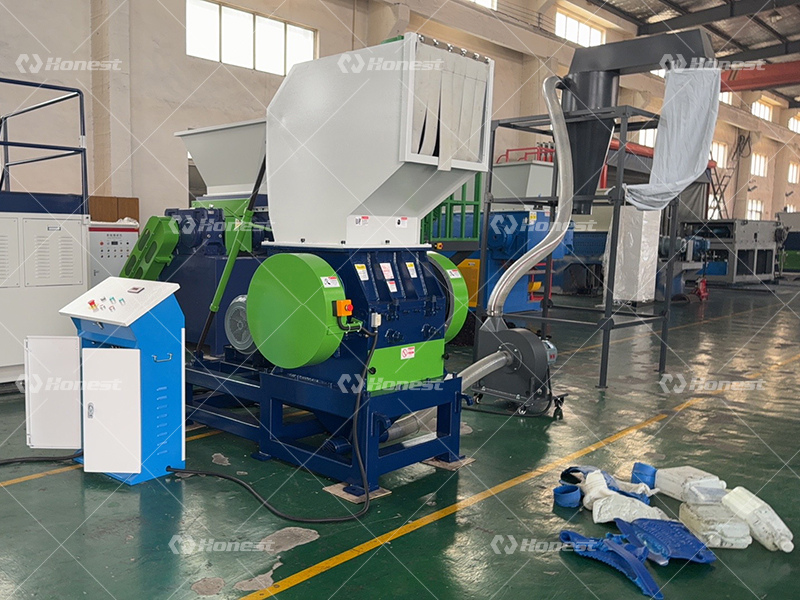plastic crusher machine
With the rapid growth of industrial production and consumer goods, plastic waste has become one of the world’s most pressing environmental challenges. To tackle this issue effectively, recycling has become a crucial process, and the plastic crusher machine plays a key role in converting waste plastic materials into reusable resources. This article explores the sources of waste plastic, the importance of plastic crushing, the main types and working principles of plastic crusher machines, and the economic and environmental benefits of recycled plastic materials.

1. Sources of Waste Plastic
Waste plastics come from various sources, including household items, packaging materials, industrial scraps, agricultural films, and discarded consumer products. Everyday objects such as bottles, containers, pipes, toys, and electronic casings contribute to enormous amounts of plastic waste. In industrial settings, leftover materials from manufacturing and defective products also add to the problem. Without proper recycling, these plastics often end up in landfills or oceans, causing long-term environmental damage.
2. The Necessity of Plastic Crushing
Plastic materials are lightweight but bulky, making them difficult to store, transport, or recycle directly. Crushing them into smaller pieces significantly reduces volume and makes the recycling process more efficient. A plastic crusher machine is essential for breaking down waste plastic into uniform flakes, which can then be washed, melted, and reprocessed into new products. By using plastic crushers, manufacturers can save energy, reduce raw material costs, and minimize environmental pollution. It also supports the circular economy by transforming waste into valuable resources.
3. Types and Working Principles of Plastic Crusher Machines
There are several types of plastic crusher machines designed for different materials and applications:
-
Standard Plastic Crusher – Ideal for crushing plastic bottles, containers, and injection molding products.
-
Heavy-Duty Plastic Crusher – Designed for thicker materials like pipes, sheets, and large plastic blocks.
-
Mini Plastic Crusher – Compact and suitable for small workshops or laboratories.
-
Soundproof Plastic Crusher – Equipped with noise-reducing enclosures for quiet operation.
The working principle of a plastic crusher machine is straightforward yet efficient. The plastic material is fed into the crushing chamber through a hopper, where rotating blades and fixed knives work together to cut and grind the plastic into small flakes. The crushed material passes through a filter screen to ensure uniform size before being collected for further processing. The machine is powered by an electric motor and often includes safety devices, overload protection, and easy maintenance features.
4. Applications and Benefits of Crushed Plastic
The crushed plastic material has wide-ranging applications across multiple industries. It can be re-melted and molded into new plastic products such as containers, pipes, films, and even furniture. In textile manufacturing, crushed plastics like PET are used to make polyester fibers. Additionally, recycled plastic can be mixed with virgin materials to produce cost-effective composite products.
Economically, the use of a plastic crusher machine reduces the need for virgin plastic production, lowering manufacturing costs and improving profit margins. Environmentally, it minimizes waste, conserves energy, and decreases pollution caused by burning or dumping plastics.
5. Conclusion
In conclusion, the plastic crusher machine is a vital tool for sustainable waste management and plastic recycling. It transforms waste into valuable raw materials, reduces pollution, and supports a cleaner environment. As global awareness of sustainability continues to rise, the adoption of efficient plastic crushing equipment will remain a cornerstone in the pursuit of a greener, circular economy.



